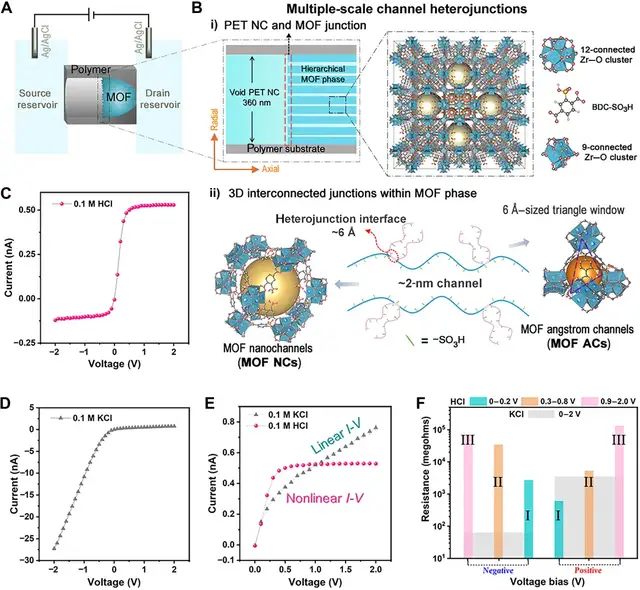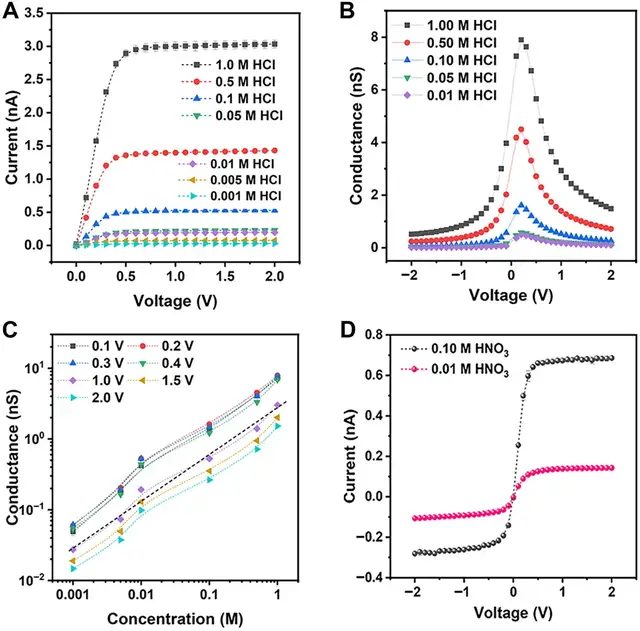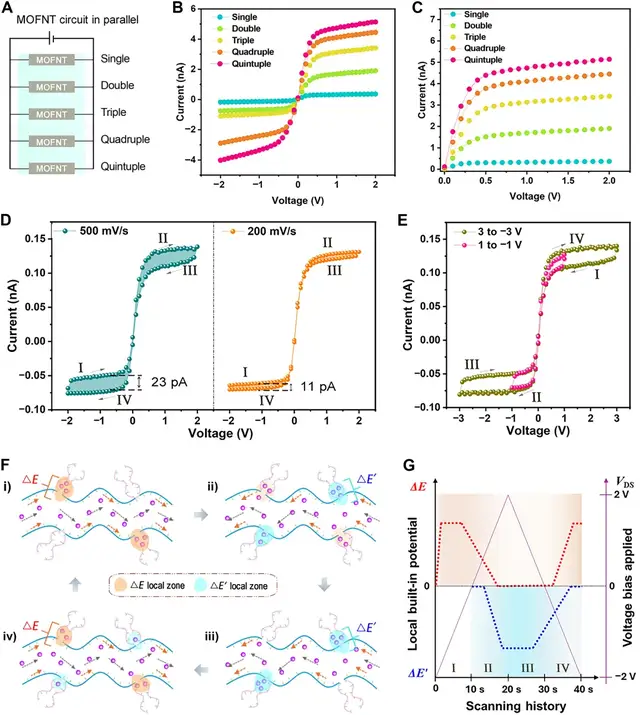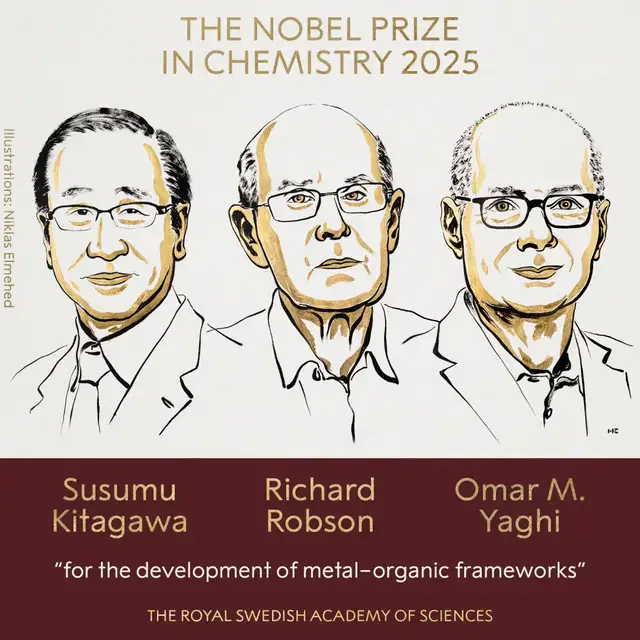Nobel Prize-Winning Breakthrough Turned into a Chip

MOF Nobel Prize Win Leads to Breakthrough Chip Technology
Who says the MOF (Metal–Organic Framework) that just won the Nobel Prize in Chemistry is “useless”?
Once dismissed decades ago for having “only theory but no practical application,” this material has — right after receiving Nobel recognition — been turned into a chip.
> The Nobel committee’s foresight is impressive.

Monash University’s Latest Breakthrough
Scientists at Monash University have used MOF to create ultra‑miniature fluidic chips.
Key difference from traditional chips:
- Not only perform standard computations
- Store previous voltage changes, forming short‑term memory similar to brain neurons

> This could be a paradigm for next‑generation computers — functional MOF materials only a few nanometers thick could enable advanced fluidic chips that complement or surpass today’s electronic chips.
---
Nano‑Fluidic Chips with “Brain‑Like” Memory Pathways
The Challenge
Ion‑selective transport under nanoconfinement shows potential for bio‑mimicry, ion separation, and ionic–electronic devices. However:
- Manufacturing high‑precision nano‑channel devices with tunable nonlinear ion transport is difficult.
The MOF Solution
MOFs offer:
- Well‑defined channel structures
- Multiple possible chemical compositions
- Atomic‑level precision for molecule and ion transport
Using these properties, researchers developed the layered nano‑fluidic transistor device (h‑MOFNT).
---
Step‑by‑Step Device Construction
- Layered Zr‑MOF‑SO₃H crystal assembly inside a single polymer nanochannel (NC).
- Result: Layered MOF‑based nano‑fluidic device with multiple heterojunctions.
- Setup:
- Amino‑modified PET NC thin film with a bullet‑shaped nanochannel clamped between two cells.
- Tip side filled with ligand aqueous solution.
- Opposite side filled with metal precursor aqueous solution.
- Reaction:
- The meeting of precursor and ligand molecules inside the NC forms nuclei → MOF crystal growth at tip side.

---
Heterojunction Types
- 1D heterojunctions: 100 nm diameter, between PET NC and dense MOF phase.
- 3D internal MOF phase junctions:
- Zr–O cluster units with 9‑ or 12‑connectivity, functionalized by H₂BDC‑SO₃H for secondary channels.
---
Testing Nonlinear Proton Transport
Experiments in 0.1 M metal ion chloride solutions revealed:
In HCl solution:
- Low voltage (0–0.2 V): Rapid current rise
- Mid‑range (0.3–0.8 V): Moderate current increase
- High voltage (0.9–2 V): Current saturates
Observation: Unlike typical diode rectification, h‑MOFNTs show nonlinear, transistor‑like proton transport — threshold‑controlled.
Drift–diffusion experiments:
- Cation transference numbers: HCl → 0.86, KCl → 0.81
- Nonlinearity mainly from protons and K⁺ ions.
---
Parallel Device Circuit
- 5 h‑MOFNT devices connected in parallel form a fluidic circuit.
- Increasing device count produces nonlinear I–V curves analogous to electronic FETs.
- Voltage loop scans reveal hysteresis loops, showing ion transport depends on scan frequency.

---
Fluidic Memristive & Learning Characteristics
Opposite scan sequence testing (-2 V → +2 V → -2 V) showed:
- h‑MOFNT “remembers” previous voltage states
- Short‑term memory effect similar to neural plasticity

Mechanism:
- Voltage application drives protons to transfer, creating local potential ΔE.
- Polarity reversal retains ΔE temporarily before decay.
- Reverse ΔE′ forms under opposite voltage conditions.
- Interval between ΔE and ΔE′ ≈ 10 s.
- Effect strengthens with higher scan frequency.
Conclusion:
- h‑MOFNT is programmable for switching & memory functions
- Potential functional replacement for electronic devices in liquid systems
Future designs of heterogeneous constraint systems could enable liquid‑based information storage and brain‑like computation.
---
From “Useless” to Breakthrough
MOF was previously labeled as “useless” due to:
- Poor structural stability (often decomposes in water/air)
- Complex synthesis routes
- High cost
- Structural inconsistency in mass production

Despite enormous publication volume (>100,000) on applications like gas storage, CO₂ capture, battery electrodes, and sensors, truly industrialized applications were rare.
MOF chips change this narrative — MOF may simply have been awaiting the right application scenario.
---
Reference Links
- https://x.com/Dr_Singularity/status/1977133218512896270
- https://www.science.org/doi/10.1126/sciadv.adw7882
- https://phys.org/news/2025-10-scientists-nanofluidic-chip-brain-memory.html
---
Bridging Theory and Application with AiToEarn
Platforms like AiToEarn官网 can accelerate adoption of emerging technologies by enabling:
- AI‑generated multi‑platform content publications
- Monetization across Douyin, Kwai, WeChat, Bilibili, Xiaohongshu, Facebook, Instagram, LinkedIn, Threads, YouTube, Pinterest, X (Twitter)
- Analytics with AI模型排名
By connecting innovators to global audiences, AiToEarn helps share breakthroughs like MOF-based chips efficiently and strategically.


